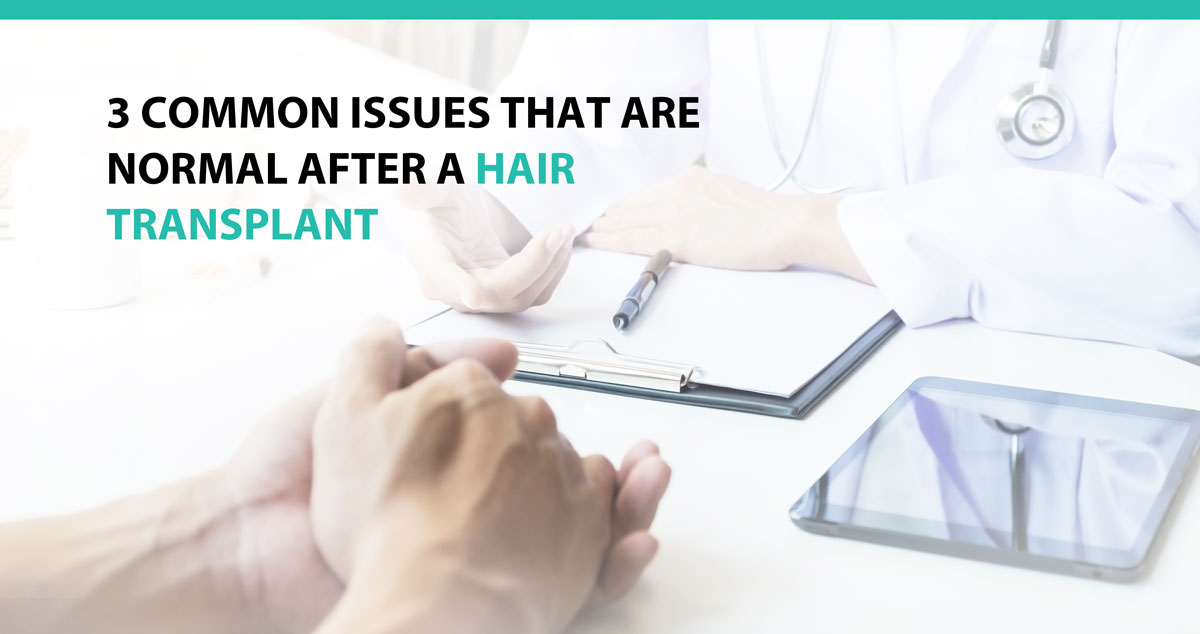
A hair transplant is one of the most successful and reliable hair restoration procedures if you are struggling with hair loss. While a hair transplant affects everyone differently, there are a few issues that although may be alarming at first, they are perfectly normal and expected. Here are three common issues you should expect after your hair transplant surgery that should not cause you to worry.
- Hair Shedding
Once you undergo a hair transplant procedure, your hair will start falling off within the first three weeks in what is known as shock loss. This usually happens after any hair restoration surgery as the transplanted hair shouldn’t into a dormant phase. However, this doesn’t mean the procedure was unsuccessful and is rather an integral part of the transplantation process as it allows for new hair to grow.
When your hair has fallen off, new hair will start growing between 3 and 6 months. Note that only very few patients do not experience shock loss. This is because the transplanted hair stays on the scalp until the new hair starts to grow and pushes it off. Regardless of whether you shed hair or not, it doesn’t have an impact on the results of your hair restoration.
- Pimples and Cysts
The occurrence of pimples or cysts on the transplant areas is known as folliculitis. Pimples on the donor may occur due to trauma caused by the procedure and normally go away on their own. On the other hand, pimples on the recipient area may occur for a variety of reasons ranging from irritation caused by the newly transplanted grafts to infection and even ingrown hair. Sometimes, you may experience pimples as a result of continuous secretions by the sebaceous glands caused by blockage around the follicles.
Fortunately, these pimples are easy to handle and pose no real health risk. However, you should notify your doctor if you experience pimples or cysts so that you can get advice on how best to handle them. While they can resolve on their own, you may need to pop them and apply an antibiotic cream that your doctor will have to recommend.
- Scabbiness
Regardless of the type of procedure you undergo, both Follicular Unit Transplant (FUT) and Follicular Unit Extraction (FUE) result in little scabs at the area where the grafts are transplanted. The scabs may result in an itching sensation on your scalp. However, do not scratch the itching area as it will dislodge the scabs and lead to delayed healing.
Usually, the scabs slough off as fast as three days after they occur. If itching lasts for seven days or more, you can use your finger covered with a tissue to rub the place instead of scratching the area with your nails. The tissue will help prevent the transfer of bacteria from your nails and fingers onto the healing scalp.
After Care Tips for Hair Transplant Surgery
To ensure a quick recovery and avoid complications after your hair transplant, you need to follow your doctor’s instructions and practice aftercare on the transplant area. One way of taking care take of your scalp after the surgery is by avoiding strenuous activities that may worsen swelling and pain on your face. You should also sleep with your head elevated at least 45 degrees to minimize swelling, and keep the transplant area moist using the sterile solution that your doctor will give you. You can start washing your scalp with mild shampoo four days after the surgery but take care not to submerge your head in too much water. Lastly, ensure that no dirt, dust, or bacteria gets on your scalp to prevent infections.
Contact Las Vegas Hair Transplant Expert
If you are struggling with hair loss, Dr. Williams can successfully help you restore your hair using a hair transplant procedure that suits your unique situation. Book an appointment today for reliable hair loss solutions.










